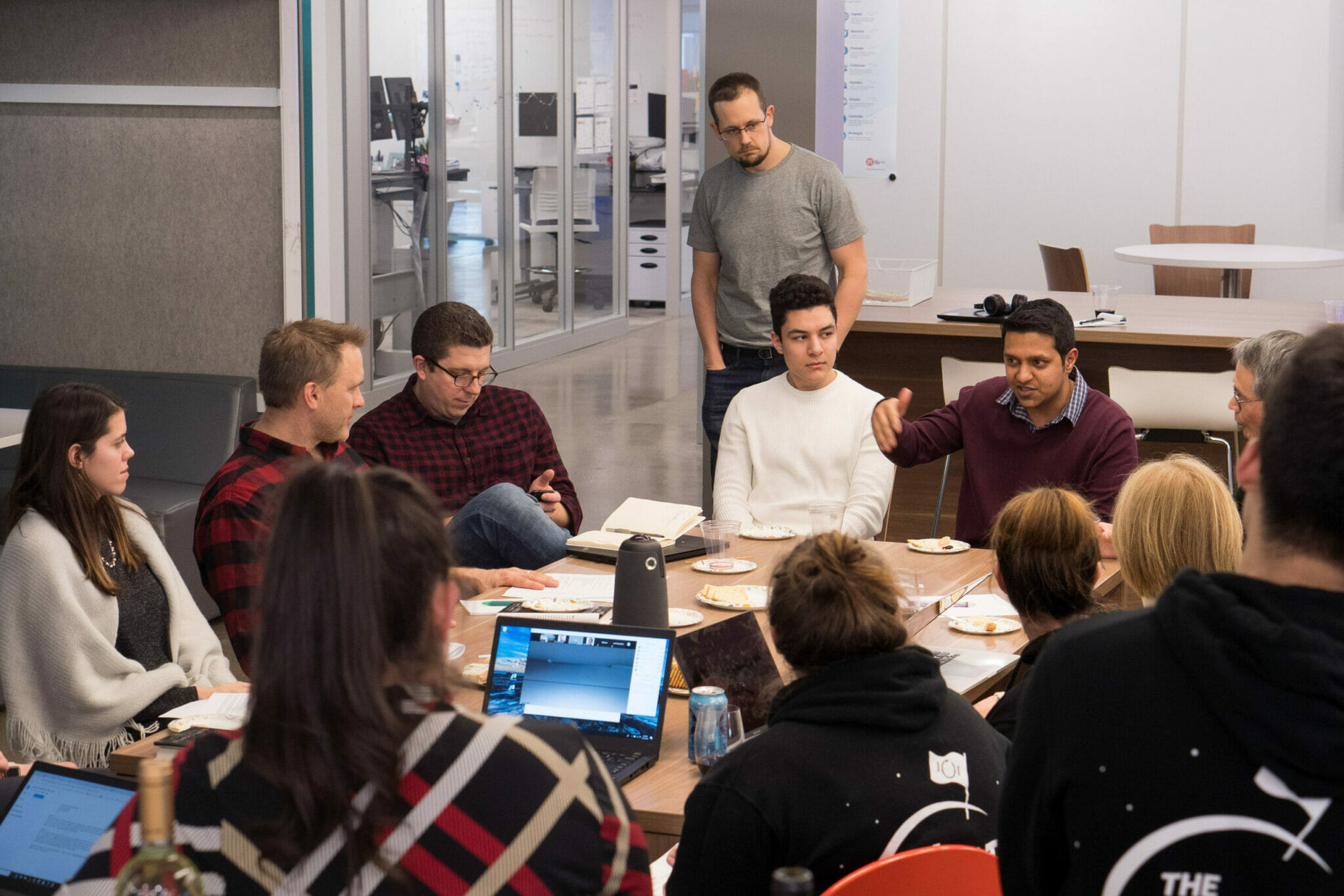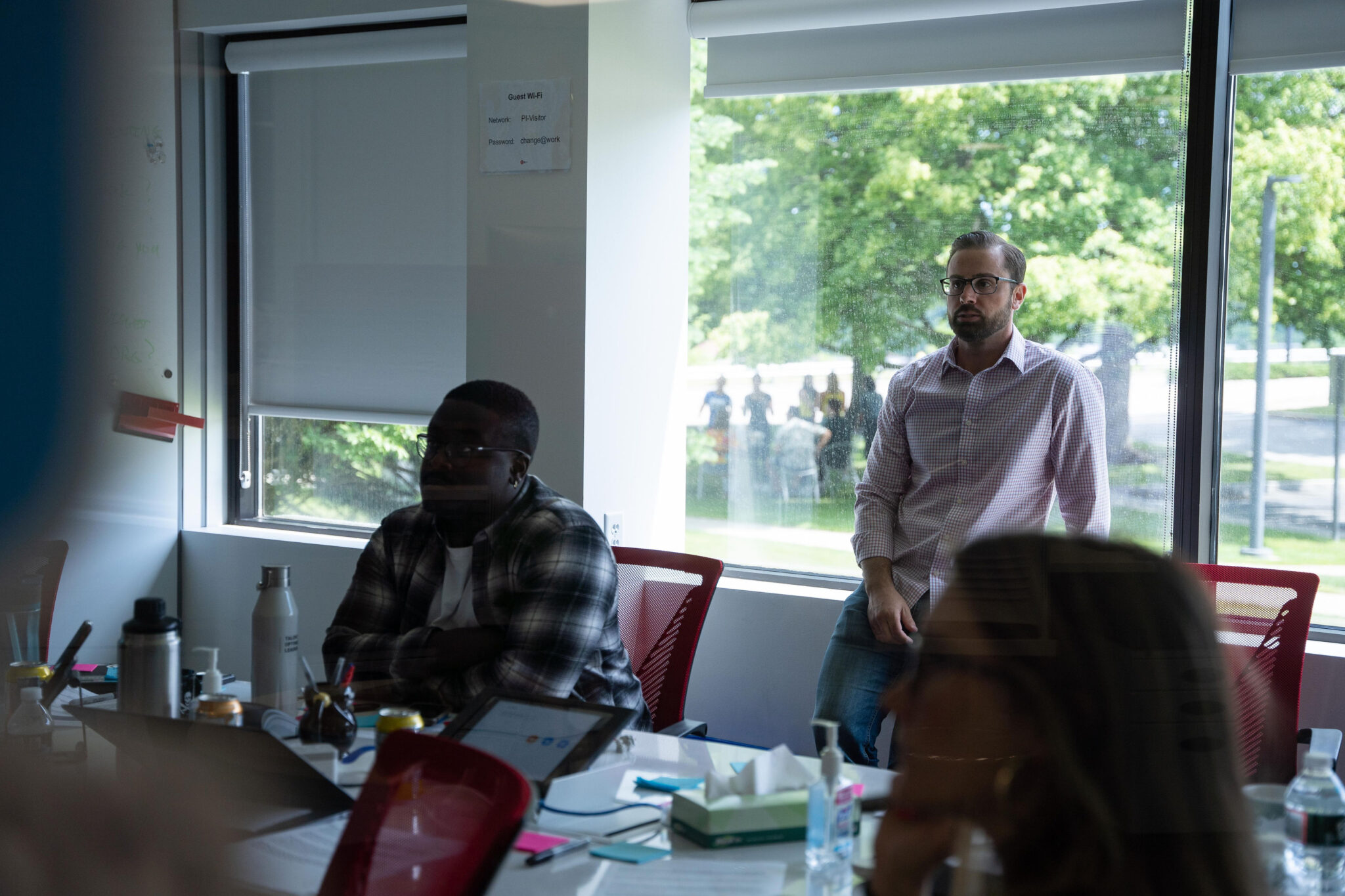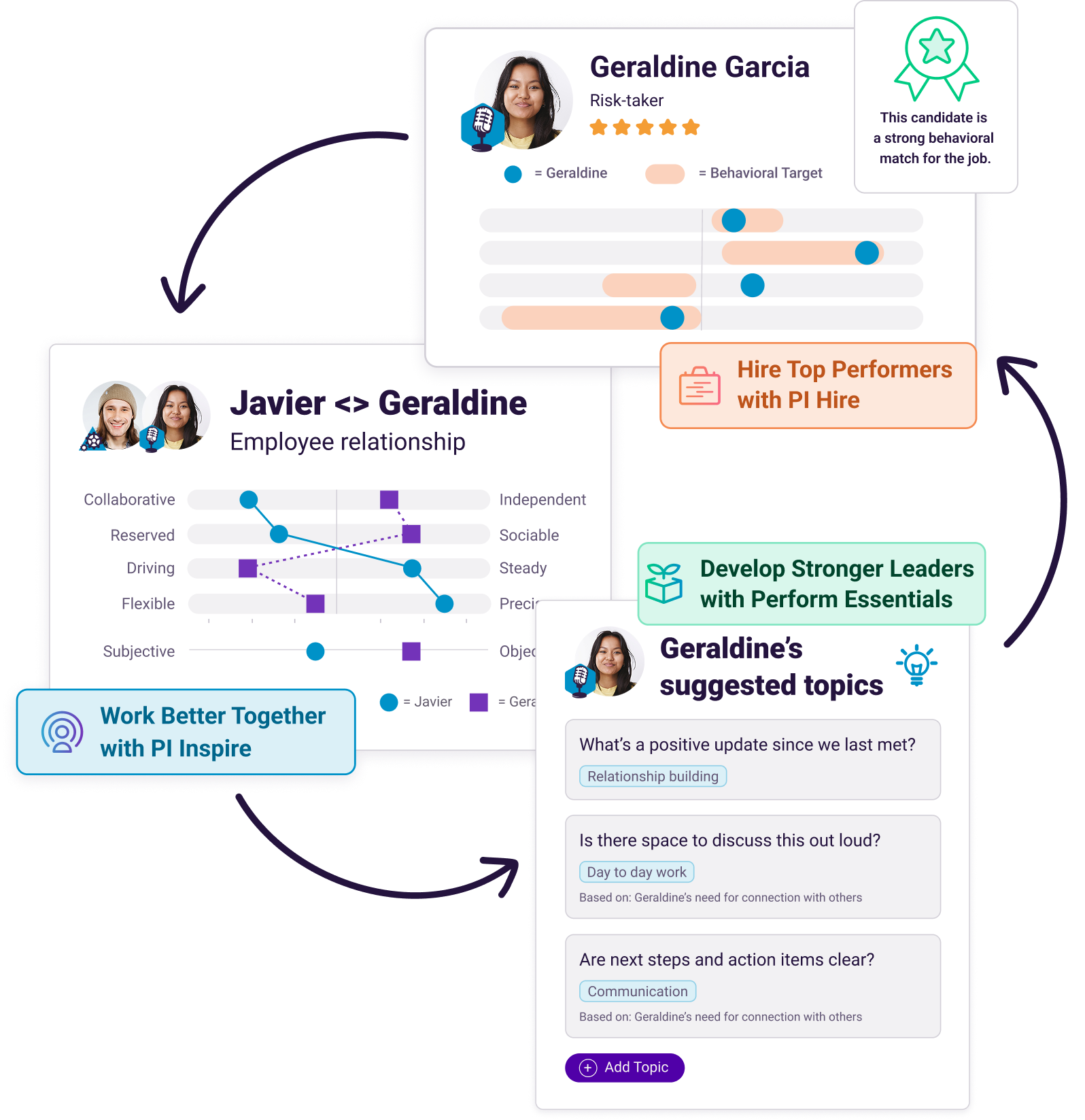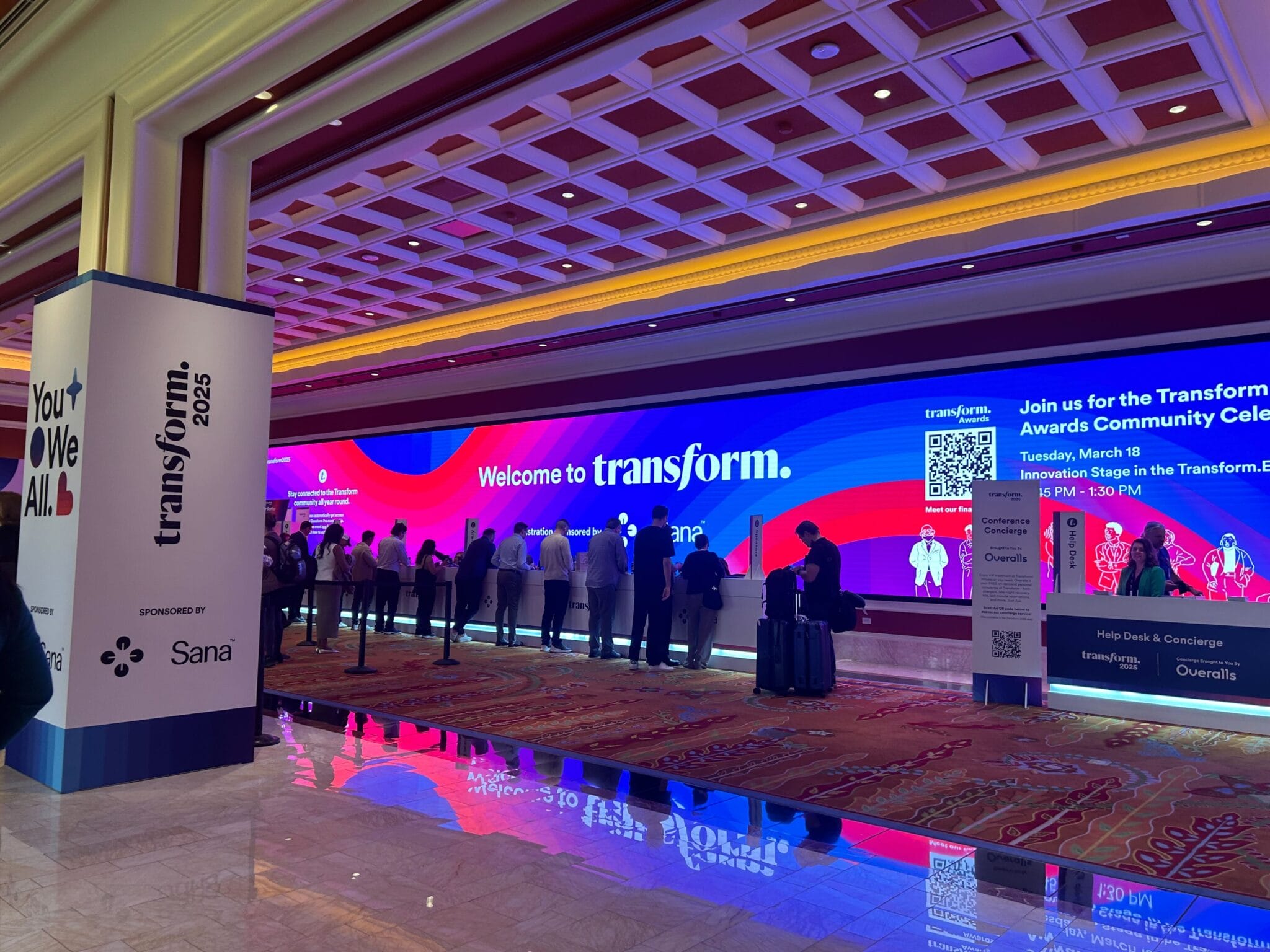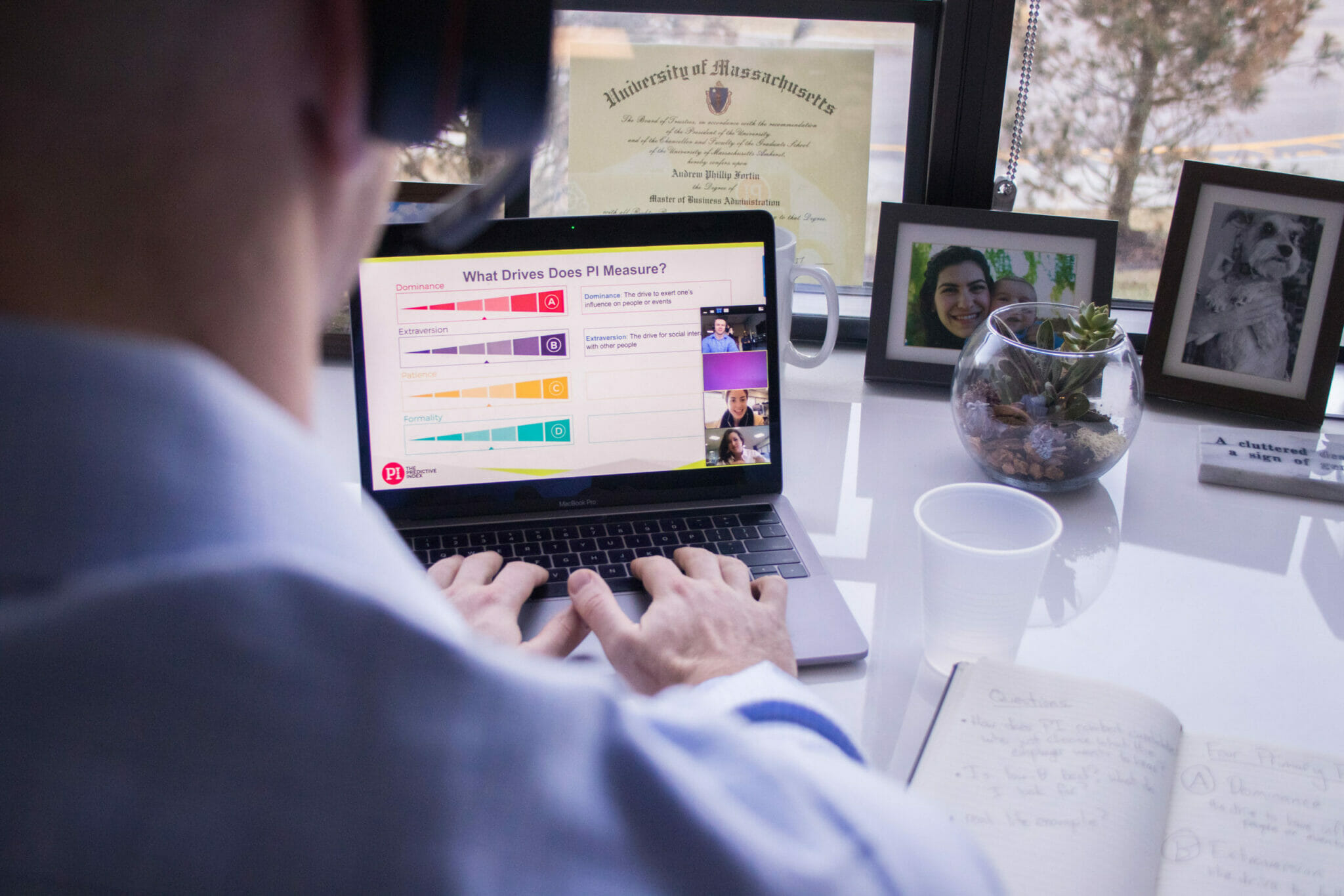Imagine being told the job you just accepted will provide you with opportunities to work at a fast pace, and interact with others. But a month or two in, you realize not only is the work incredibly repetitive, but you’re on your own all day, with no need (or opportunity) to collaborate with the rest of your team.
How long would you want to stay in that role?
Job fit is the sense of feeling productive and satisfied in your work because your day-to-day tasks energize you. When we place someone in a role that is a good fit for their strengths, they tend to be productive, happy team members who stick around. When we don’t, we set them – and the organization – up to fail.
Poor job fit leads to disengagement and, eventually, turnover. Creating a Job Target is a vital step in the PI Hire experience, aiding you along the way as you search for, interview, onboard, and coach employees.
You can’t make a smart hire or have robust performance conversations without knowing what behaviors and cognitive ability the role requires. Job Targets allow you to see how a person’s behavioral and cognitive results match your ideal targets for a particular role.
Right person. Right role. Every time.
PI Hire gives you the data you need to better predict which candidate will succeed in the role, and stay for the long term.
But how do you know the target you’ve set is attracting the right candidates?
It’s sure not a set-it-and-forget-it process. Here are a few steps to ensure your target is working for you (i.e., identifying the right people for a role).
Step 1: Identify the key stakeholders with knowledge and relevant perspective of the job.
You don’t need to include every person who is on the interview team, just the three to five people who know the role best. Typically, this is the hiring manager, a top performer currently in the role, and someone from your recruiting team.
Step 2: Align on what’s needed in the role.
One of the most common mistakes is not having alignment on the primary behavior and cognitive requirements of the role. Everyone needs to understand – and agree on – the top expectations, and the most important and most frequent behaviors needed for someone in that role to be successful.
This conversation can help uncover discrepancies, which could even help people currently in the role.
For example, based on previous experiences, the recruiter may believe a role requires opportunities to connect and interact with others, but the hiring manager might not agree. When these situations arise, it’s a great opportunity to ask:
- Is this behavior important and frequent for the job?
- Could someone be successful in this role without this behavior?
- How independent does this person need to be? How often will they need to collaborate with other people?
- This will help determine if the first factor in the target, Dominance (A), should be higher or lower.)
- How outgoing or persuasive do they need to be? Is this a more reserved or analytical role?
- This will help determine if the second factor in the target, Extraversion (B), should be higher or lower.
- Will this job be fast-paced, or handle multiple priorities? Will this job need someone who is more methodical, or able to handle repetitive tasks?
- This will help determine if the third factor in the target, Patience (C), should be higher or lower.
- Does the job require a lot attention to detail, or closely following rules and guidelines?
- This will help determine if the third factor in the target, Formality (D), should be higher or lower.
This conversation might also help a stakeholder see the job’s requirements in a new light, or underscore that the organization is looking for something new for the role. For example, a role may have formerly involved speaking to customers in person, but that function is now done through an automated messaging system. So, the ideal person in the role may need a different behavioral profile or cognitive ability.
Provide each stakeholder an opportunity to discuss why they think the job requires certain behaviors. If they still cannot come to agreement, the person who is most familiar with what is required to succeed in the role should have the final say. This is why it’s important to make sure you have the right stakeholders from the beginning.

Step 3: Create the Job Target in the software.
There are multiple ways to create a Job Target. You can choose which is best for the role or for your organization based on your knowledge of the science or comfort with the targets our system automatically generates from decades of experience.
Step 4: Review the target you’ve set, and adjust if necessary.
This is where things really start to come together.
You’ve gained agreement on the Job Target, and you’re using it to hire a great candidate. Download the interview guide, and determine which members of the interview team are responsible for asking which questions. If you’re using it for a performance conversation with a current employee, download the coaching guide too, so you can focus on the areas that are crucial to their success in their role (or the role they aspire to move into).
Congratulations! You have a Job Target.
Review the Job Report and matching Reference Profiles to help verify that you’ve accurately captured the needs and expectations of the job. The matching Reference Profiles should be viewed as suggestions – they do not indicate that candidates who do not match the Reference Profile will be poor candidates.
Remember to look at the whole person – their assessment results, experience, and values – in any hiring exercise. In doing so, you can mitigate some of the inherent bias we all bring to the process. And you’ll proceed with much more confidence in the hires you’re making.
